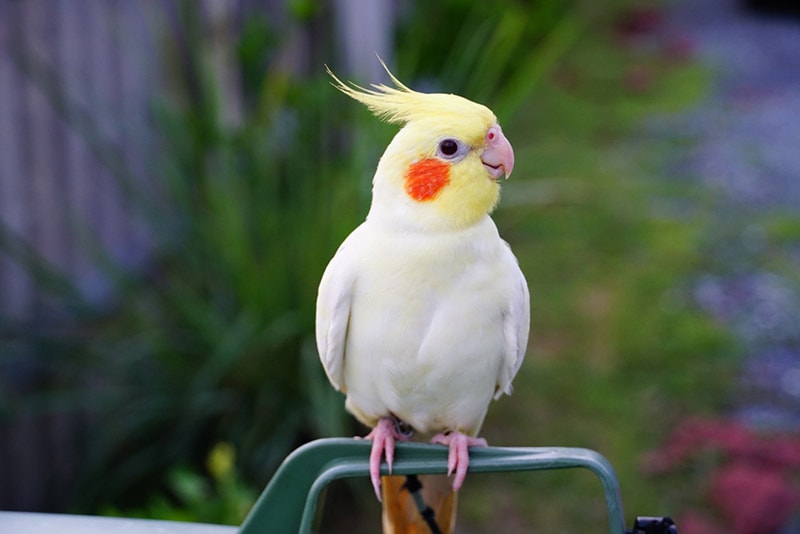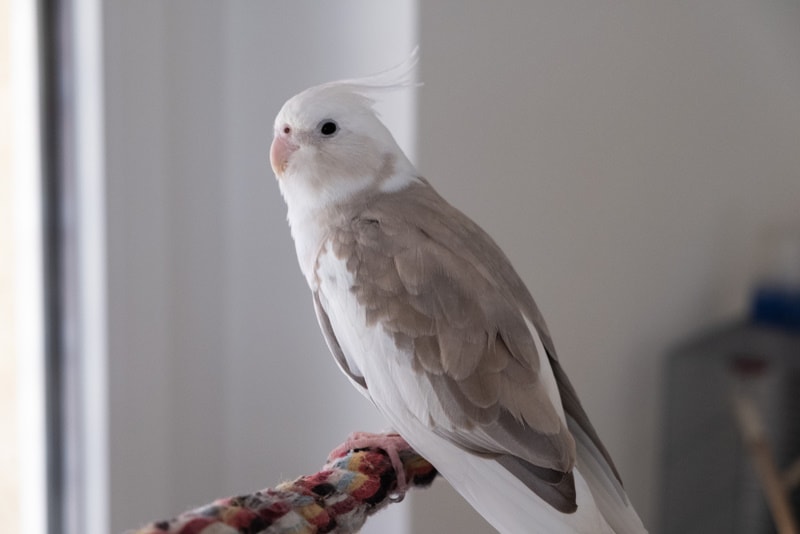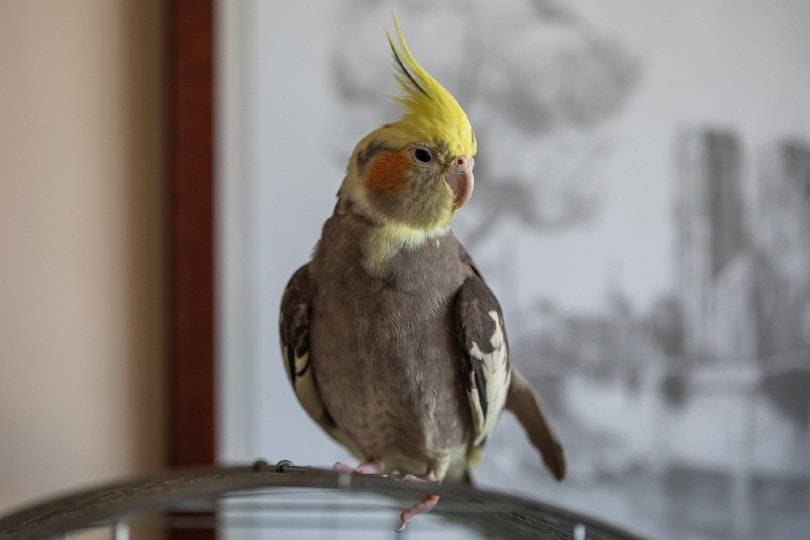My Cockatiel Laid an Egg: Vet-Approved Next Steps
Updated on
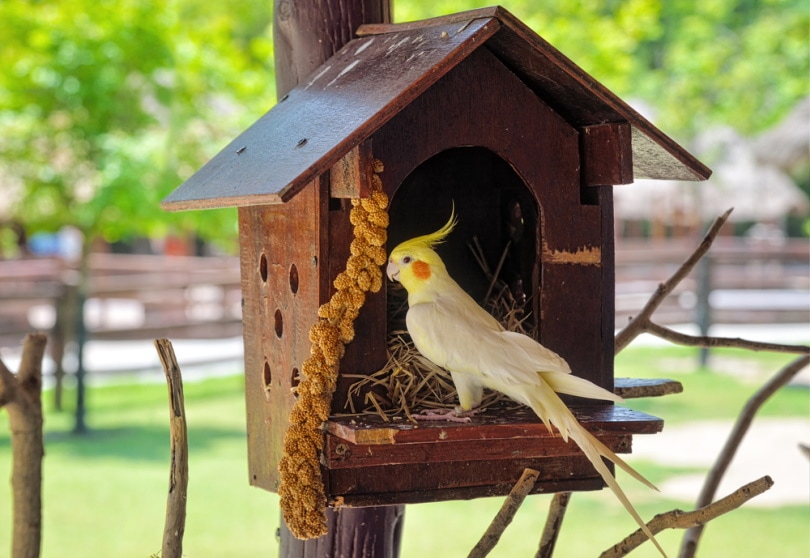
Click to Skip Ahead
Many first-time Cockatiel owners are shocked when they learn that female birds can lay eggs without a mate. These eggs are unfertilized and not viable, but you might wonder what exactly you should be doing with the egg once she’s laid it.
Keep reading to find everything you’ve ever wanted to learn about egg laying, including what to do when your cockatiel lays an egg and how to prevent it from happening again.
What to Do With Your Cockatiel’s Egg?
What you wind up doing with your cockatiels egg will depend on whether it’s been fertilized.
If the Egg Is Fertilized
If your female cockatiel has spent any amount of time with a male cockatiel or one you don’t 100% know the gender of, there is a chance that the egg she’s just laid is fertilized.
To determine if the egg is viable, you can try using a process known as candling. You will need to wait at least a week after the egg’s been laid before candling it. After at least seven days have passed, hold up the egg to a source of light. A fertilized egg will have a dark dot in the middle (the embryo) with veins that shoot out of it. If the egg is unfertilized, it’ll be more transparent aside from a faint shadow of a yolk.
If you determine that the egg is viable, you should return it to the female or use an incubator. If you opt to return the egg to the mother, you should provide her with a nesting box to give her some privacy as she sits upon her eggs. Both the female and male cockatiels will spend time incubating their eggs. Leave them alone as much as possible during the approximately 21-day nesting period. If you disturb them too much, they may abandon the eggs.
When the chicks hatch, leave them with the mother until they can fend for themselves. You should offer your cockatiel more food than usual so she can feed her chicks. Your vet can provide guidance on proper nutrition and supplementation during this time.
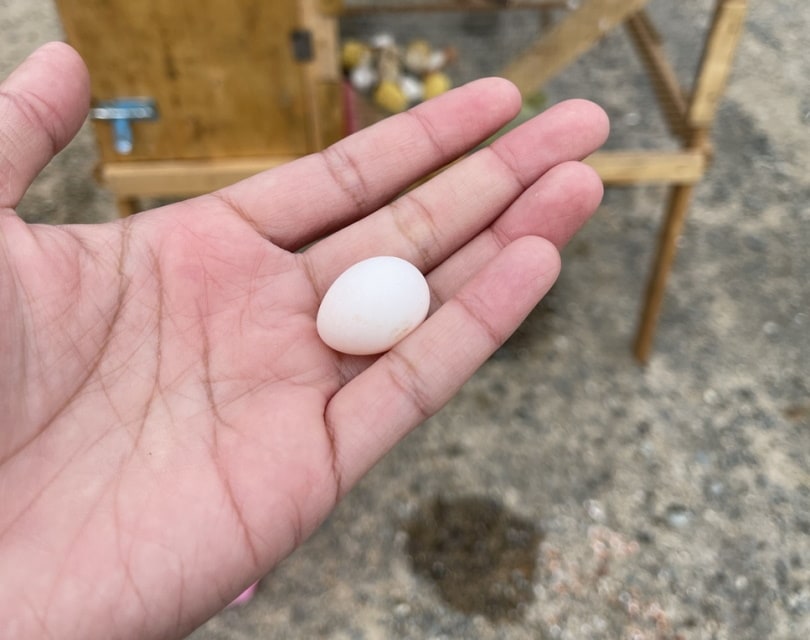
If the Egg Is Unfertilized
There is an entirely different way to approach the laid eggs if your cockatiel has always been housed alone or you’ve determined through candling that the eggs she’s laid are unviable.
Her instincts may tell her to sit on the eggs, which is fine. You can allow her to do so but don’t provide her with a nesting box or anything to sit in that may encourage nesting.
You should remove the egg and replace it with a fake one or boil or freeze it before returning it to the female. You must return some type of egg or egg substitute to her as she may continue to lay eggs to make up for the ones you’ve removed and not returned. Otherwise, the cockatiel will keep laying eggs. Persistent egg laying leads to malnutrition and other health issues.
Leave the eggs with the mother for the length of a typical incubation period, around three weeks. After this time, you can remove an egg one by one until there aren’t any left in the cage. Eventually, your cockatiel will understand that the eggs she laid weren’t viable. In many cases, she will abandon the eggs herself after some time.
What Are the Potential Complications of Excessive Egg Laying?
Unfortunately, allowing your cockatiel to continue laying eggs could have severe health implications. So let’s take a closer look at some of the risks of not preventing further egg laying.
1. Hypocalcemia
Egg laying requires large amounts of calcium. Birds eating mostly seeds are at greater risk since these diets are deficient in calcium. Hypocalcemia can cause egg binding, seizures, and even death.
2. Egg Binding
A cockatiel that’s laying eggs needs to be in tip-top condition to have the protein and calcium required to produce an egg. She also needs to have the energy necessary to lay it.
Excessive egg laying can cause calcium depletion, resulting in poor-quality egg shells. These poorer quality shells can get stuck as they try to move through the oviduct, resulting in egg binding.
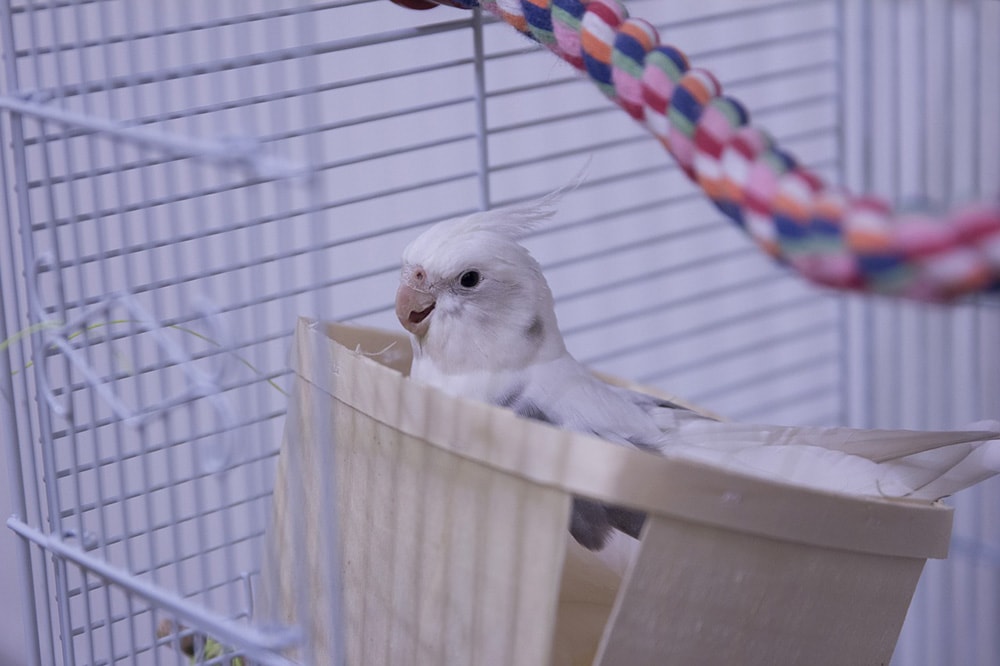
Egg binding is a potentially fatal condition that needs to be addressed as soon as possible. Symptoms to be on the lookout for include:
- Weakness
- No longer perching
- Sitting at the bottom of the cage
- Straining
- Egg bulging out of the vent
- Difficulty standing
- Difficulty breathing
- Bleeding from the vent
3. Egg Yolk Peritonitis
Egg yolk peritonitis is another extremely serious condition and one of birds’ most common fatal obstetrical conditions. This occurs when a cockatiel’s egg releases yolk into the abdominal cavity. This can happen in the case of a developing or incompletely shelled or ruptured egg that fails to get into the oviduct. This causes inflammation, and the abdominal cavity fills with liquid. This is very uncomfortable and can affect the bird’s ability to breathe and eat. This condition often leads to a systemic life-threatening infection.
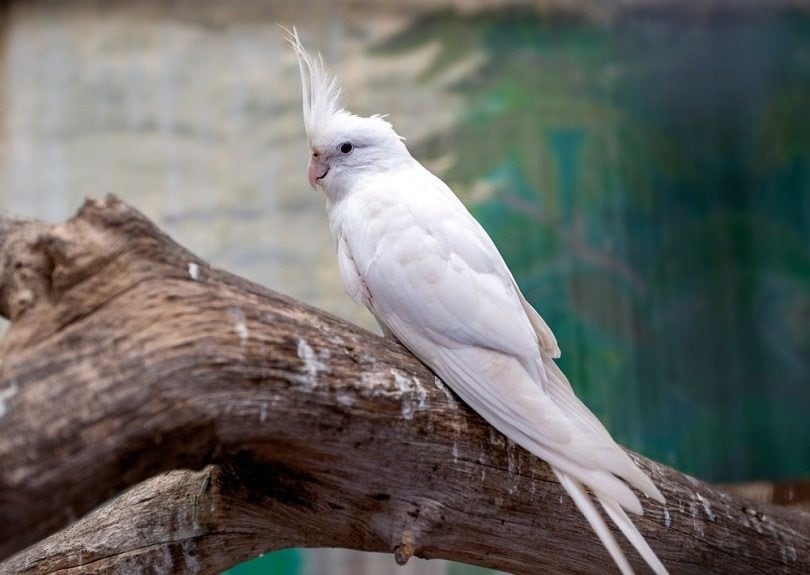
Symptoms of egg yolk peritonitis include:
- Abdominal swelling
- Weight loss
- Wide stance
- Weakness
- Lethargy
- Fluid accumulation in the abdominal cavity
- Difficulty breathing
- Pain
- Sudden death
4. Cloacal Prolapse
A cloacal prolapse can happen to any bird that is frequently straining; therefore, it is commonly seen in egg-bound birds. This emergency requires immediate veterinary care as the cloaca can become infected and so traumatized that it could cause your cockatiel to bleed to death.
Symptoms of cloacal prolapse include:
- Lack of droppings
- Depression
- Straining
- Fluffed feathers
- Poor appetite
- Blood in droppings
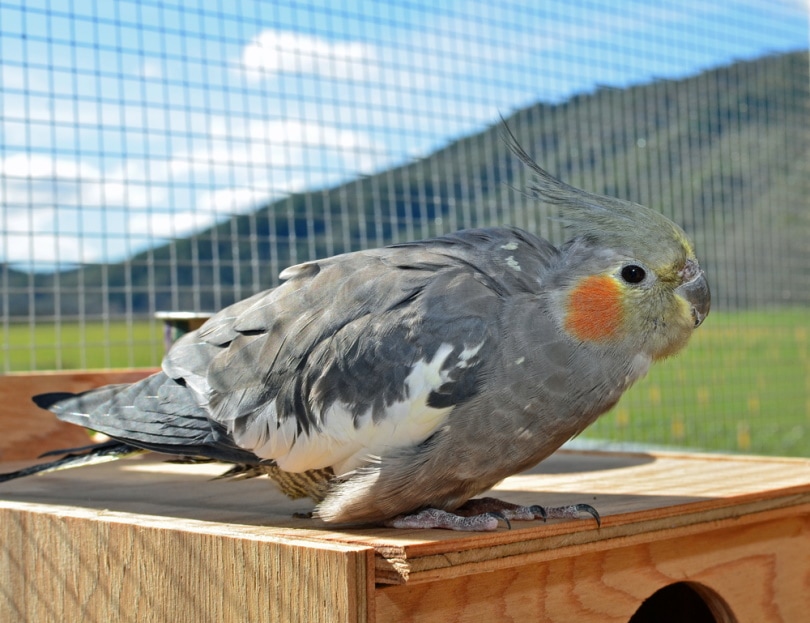
How to Discourage Chronic Egg Laying
Now that you know the potential dangers of excessive egg laying, you’re probably curious about what you can do to prevent it from happening in the future. There are several things you can do to achieve this.
1. Make Them Uncomfortable
While this sounds inhumane, it’s not as bad as it sounds, we promise. Small changes, like moving her cage to a different spot in the home or rearranging her perches and bowls, can make cockatiels feel uncomfortable to the point that they realize that the time is not suitable to lay eggs.
2. Remove Nesting Sites
Remove anything from her cage that your cockatiel may associate with nesting. This will include objects like cardboard boxes, fabric toys, or anywhere she can hide. Some cockatiels like transforming their food bowls into makeshift nests, so you might consider buying something smaller.
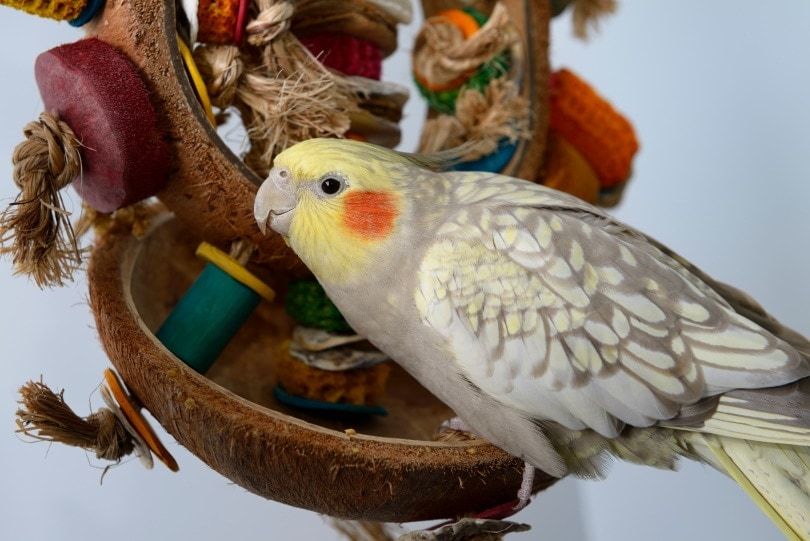
3. Reduce Exposure to Direct Sunlight
Cockatiels in the wild may feel the urge to mate when there are more than 12 hours of daylight, so your bird may be laying eggs because her body senses the change in daylight hours. Artificial lights might have the same effect. Be careful not to leave the lights on for extended periods and try moving her cage somewhere in your home where she will not be in direct sunlight for more than 9 hours a day. You might also try covering her habitat with a towel to keep the light out.
4. Reduce Exposure to “Mates”
Even if your female bird is housed alone, she may find potential suitors in inanimate objects or even her owners. For example, she may believe things like mirrors or stuffed toys are her mates. If your cockatiel thinks you’re her mate, avoid bonding behaviors like grooming or kissing.
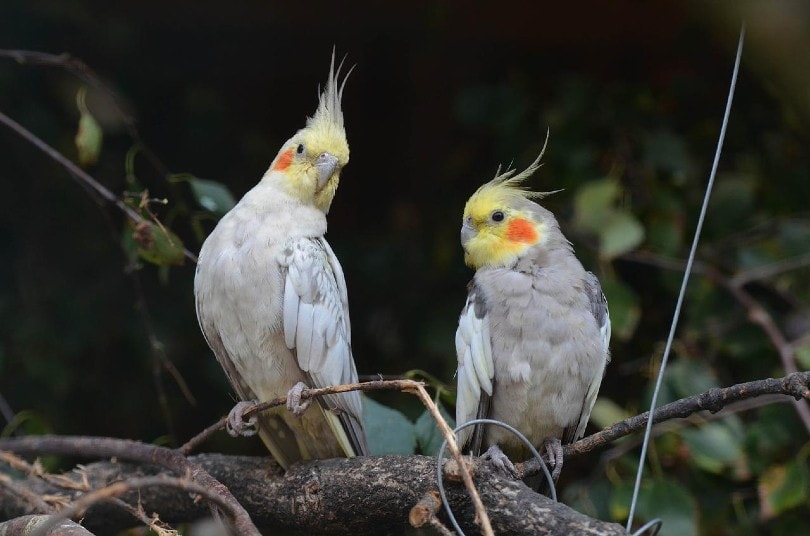
5. Consider Veterinary Intervention
If your cockatiel continues to lay more than two clutches per year, your avian veterinarian may suggest prescription hormone therapy or even a hysterectomy. Hormone injections successfully suppress egg laying, while hysterectomies are typically looked at as a last resort. During this procedure, your vet will remove a portion of the oviduct as it’s dangerous and difficult to remove the ovary. Unfortunately, this means your cockatiel may still exhibit sexual behaviors, and they can also still develop ovarian cysts.
Some vets recommend allowing the female to raise one clutch of chicks, provided she’s still in good health. This method is not realistic for every cockatiel owner, but it’s something to consider.
Final Thoughts
If your female cockatiel is laying eggs without a mate, you need to take steps to prevent this behavior from happening in the future. Chronic egg laying is a serious and potentially life-threatening behavior that needs to be addressed sooner than later. If you plan on breeding your cockatiel at some point, talk to your exotic vet to determine what nutrients you’ll need to provide to ensure she’s in the best shape for healthy egg laying.
- See also: 12 Types of Cockatiels (With Pictures)
Featured Image Credit: Parinya Feungchan, Shutterstock


